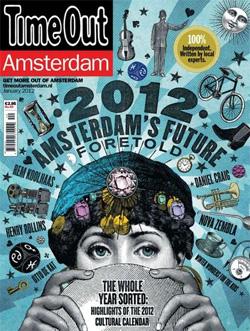Cold comforts

An exhibition once frozen for 300 years now heats up a classic 16th-century tale of survival against all odds (and a few polar bears), finds Benjamin Roberts.
In late 1596, 17 Dutch mariners found their ship locked in the ice near the Arctic Circle, stranded in a near-perpetual night at a bitter 30 degrees below zero. The clock in their cabin was the only way the men could count the days before spring came to release them.
Then, on December 3rd, the clock froze.
The 75 artifacts now on display in the exhibition ‘Frozen in Time’ at the Rijksmuseum are the mute witnesses to the odyssey of Captain Willem Barentz and his crew, whose ship became trapped off the ice-choked coast of Nova Zembla during a failed expedition to find the Northeast Passage. The men struggled desperately through the winter of 1596 in a 10m x 6m makeshift cabin known as the Behouden Huys, or safe house, built with wood from their ship.
After spring finally came, 14 survivors were able to return to Amsterdam in May 1597. They left behind them in the ice an array of weapons, tools, shoes, clothes, letters and other personal effects – including the stopped clock and three bodies of those who didn’t make it.
‘The artifacts in this exhibition were literally frozen in time for almost three hundred years,’ explains Jan de Hond, curator of history at the Rijksmuseum. ‘These objects were completely unknown to us until 1871.’
That year, a Norwegian fur hunter called Elling Carlsen finally discovered the cabin, in the barren landscape of Nova Zembla. By that time, their adventure had already become a legend, thanks to Gerrit de Veer, one of the survivors, who wrote a book about his experiences, Waerachtighe beschrijvinghe van drie seylagien (The True and Perfect Description of Three Voyages) (1599). It was an instant Golden Age bestseller, reprinted numerous times and translated into French, German, and Latin.
De Veer’s tales of the sailors’ hardships, such as fighting off polar bears with halberds (accompanied by a rich illustration) or battles with bears that were strong enough to overturn a fishing boat filled with sailors even after being pelted with bullets. The example of their sheer determination captured the imagination of a young Dutch nation fighting for independence from Spain.
The objects on display in ‘Frozen in Time’ include the recovered halberds, a spear and other ax-like weapons they used against polar bears, accompanied by 15 engraved illustrations taken from de Veer´s book. The exhibition also includes Captain Barentz’s final letter or cedlkin, as it was then called, before they left for Amsterdam, which was found rolled up inside a piece of wood behind the fireplace in the remains of the cabin.
Remarkably, the letter survived the intervening three hundred years relatively unscathed. ‘It took the curator of the Rijksmuseum in 1871 a week to thaw out the cedlkin before it could be rolled out and read,’ explains De Hond. In the letter, Barentz expresses his hope that God will grant them ‘a safe journey home’. Unfortunately, he died before the boat reached Amsterdam.
Many of the original items that Carlsen recovered were also used in the movie, ‘Nova Zembla’, the first Dutch movie in 3D that came out in November last year. The press received the film with mixed reviews yet the story still appeals to the Dutch public, with more than 100,000 visitors within the first four days of its premiere.
For De Hond, the most spectacular object of all is the clock, which had been intended as a gift for the Chinese. ‘For the men in the Behouden Huys, whose entire existence concentrated on not freezing to death, the clock symbolised survival,’ says De Hond. ‘Those men must have been watching the clock the entire time and listening to its ticking. It helped them maintain their sanity. When it froze, they must have felt frozen in time themselves.’
Rijksmuseum until 27 February. See major institutions listing for details.